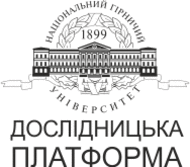№81-24
Analysis of factors that determine the efficiency of electrostatic filters
О. Zolotko1, О. Zolotko1, T. Rusakova1, Y. Voitenko1
1Oles Honchar Dnipro National University, Dnipro, Ukraine
Coll.res.pap.nat.min.univ. 2025, 81:242–252
Full text (PDF)
https://doi.org/10.33271/crpnmu/81.242
ABSTRACT
Purpose. To identify and rank the factors that affect the efficiency of electrostatic precipitators used in dust collection processes in various industries.
Research methodology is based on the application of retrospective analysis methods and expert assessments.
Research results. The study demonstrated that in modern and emerging technologies of metallurgy, cement, chemical industries, and thermal power generation, electrostatic precipitators (ESPs) are widely used for dust emission control. A decrease in their designed efficiency requires either modernization or the implementation of advanced hybrid filtration systems. An alternative approach involves identifying and eliminating the causes of reduced efficiency during operation.Factors of a fundamental, technological, and operational nature that influence the filtration process were identified, and their a priori ranking was conducted using expert analysis. The obtained results facilitate a systematic approach to solving problems related to ESP operation. Optimization of their operational parameters, taking into account the physicochemical properties of dust, enables improved filtration efficiency.
Scientific novelty. A systematic classification of factors affecting the performance of electrostatic precipitators has been carried out, grouping them into fundamental, mechanical, and operational categories. Based on a priori ranking, the priority impact of individual factors was quantitatively established for the first time. The leading role is played by the electric field intensity, the specific electrical resistivity of dust, and the effectiveness of the rapping system.It was shown that optimizing these parameters can increase dust collection efficiency by 40–50% compared to non-optimized operating conditions. The results clarify the significance of technical and operational characteristics of ESPs and provide a foundation for their design and operational improvement aimed at reducing air dust pollution.
Practical significance. The results of the study can be used in the practice of operating electrostatic precipitators in various industries when solving the problem of increasing the efficiency of electrostatic precipitators. The proposed measures can reduce risks to the health of workers, increase the level of safety in the workplace, which will ensure compliance with regulatory requirements for the protection and safety of workers.
Keywords: electrostatic precipitator, industrial emissions, working area air, industries, cleaning efficiency, influence factors, expert assessment method.
References
1. Elektrofiltr. (n.d.). https://www.em-eco.net.ua/products/jelektrofiltr/
2. Elektrofiltry (n.d.). https://7-vz.com/ua/category/elektrofiltry/
3. Elektrofiltry (n.d.). https://bmzprogress.com/catalog/pilo-gazo-siroochishchennya/electrostatic-precipitators/electrostatic-precipitators
4. Krusir, H., Madani, M., & Harkovych, O. (2017). Tekhnika ta tekhnolohii ochyshchennia hazovykh vykydiv. Navchalnyi posibnyk. ONAKhT-Odesa.https://card-file.ontu.edu.ua/server/api/core/bitstreams/c25eec0b-557e-4966-8714-b3eeda960062/content.
5. Kuznietsov, S., Venher, O., Semenchenko, O., Bezpalchenko, V., & Ivkina, Ye. (2021). Doslidzhenniavplyvudeiakykhfaktorivnarivenelektryzatsiidielektrykiv. Ekolohichninauky., 6(45), 95–99. https://scispace.com/pdf/study-of-the-influence-of-some-factors-on-the-degree-of-2iwb4zia.pdf
6. Gudanov, I. S., Lebedev, A. E., & Vatagin, A. A. (2022). Modernization of a High-Performance Electrostatic Precipitator. Chemical and Petroleum Engineering.https://doi.org/10.1007/s10556-022-01031-1
7. Jaworek, A., Sobczyk, A. T., Krupa, A., Marchewicz, A., Czech, T., & Śliwiński, L. (2019). Hybrid electrostatic filtration systems for fly ash particles emission control. A review. Separation and Purification Technology, 213, 283–302. https://doi.org/10.1016/j.seppur.2018.12.011
8. Jaworek, A., Marchewicz, A., Sobczyk, A. T., Krupa, A., & Czech, T. (2017). Two-stage electrostatic precipitator with dual-corona particle precharger for PM 2.5 particles removal.Journal of Cleaner Production,164, 1645–1664.https://doi.org/10.1016/j.jclepro.2017.07.032
9. Remus, R., Monsone, A., Rudie, S., & Sancho, L. (2013). Naikrashchi dostupni tekhnolohii ta metody upravlinnia (NDTM) Dovidkovyi dokument dlia vyrobnytstva chavunu ta stali (Dyrektyva 2010/75/IeS «Pro promyslove zabrudnennia (intehrovane zapobihannia ta kontrol zabrudnennia)»). Viddil publikatsii Yevropeiskoho Soiuzu.
10. Shorkht, F., Kourti, I., Skalet, B., Rudie, S., & Sancho, L. (2013). Dovidkovyi dokument z naikrashchykh dostupnykh tekhnolohii ta metodiv upravlinnia (NDTM) dlia vyrobnytstva tsementu, vapna ta oksydu mahniiu (Dyrektyva shchodo promyslovykh vykydiv 2010/75/EU (Kompleksne zapobihannia ta kontrol zabrudnen)). Tsentr publikatsii Yevropeiskoho Soiuzu.
11. Bilonyk, I., Kapustian, O., Berehovenko, M., Bilonyk, D., Shumykin, S., & Hubar, Ye. (2021). Doslidzhennia vlastyvostei molotkiv mekhanizmu strushuvannia elektrofiltriv, vyhotovlenykh elektroshlakovym naplavlenniam udarnoi chastyny. Visnyk Pryazovskoho derzhavnoho tekhnichnoho universytetu. Seriia: Tekhnichni nauky., (43), 41–47.
12. Yaroshchuk, L. D. (2022). Ekspertni metody v avtomatyzovanykh systemakh keruvannia: Formuvannia ta napriamy vykorystannia ekspertnykh znan: navch. posib. dlia stud. spetsialnosti 151 «Avtomatyzatsiia ta komp’iuterno-intehrovani tekhnolohii». KPI im. Ihoria Sikorskoho.
13. Bashynska, I. O. (2015). Vykorystannia metodu ekspertnykh otsinok v ekonomichnykh rozrakhunkakh. Aktualni problemy ekonomiky, 7(169), 408–412.




